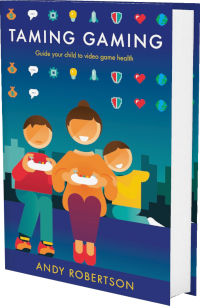 Android
Android iOS
iOS Mac
Mac Switch
Switch Wii
Wii Wii U
Wii U PC
PC PS4
PS4 PS5
PS5 Xbox One
Xbox One Xbox X|S
Xbox X|SWe've documented 26 accessibility features for Perudo, including Playable Without Hearing, No Pressured Communication, No Pressured Reveals, Audio Cues Mirrored Visually (Or no critical audio signals) and Easily Verbalised Game State. Its accessibility is strongest in Physical and Reading but it also has features in Audio, Difficulty, Getting Started and Visual to reduce unintended barriers.
This report is created with input from accessibility experts and the player community to help people find games that have the accessibility features they require. Once you have found potential games on the database, there are excellent specialist accessibility sites that offer in-depth reviews to guide your purchasing decisions.
External examiner, MIchael Heron, first checked Perudo accessibility 20 months ago. It was re-examined by Andy Robertson and updated 20 months ago.
 Accessibility Notes
Accessibility Notes
No manual is assumed from this examination - the game is mostly a folk game, but online versions of the rules are freely available.
It is possible to replace the standard six-sided dice used in the game with an accessible variant, but five of these would be required per player. Due to the covert nature of dice rolling, digital dice rolling apps are not an appropriate solution to accessibility issues here.
There are some advanced rules that can be excluded for a simple version. This includes special rules for when you have one dice and the ability to bid with ones as wild. There is a variant where you place lost dice into the middle which enables you to more easily see who has lost dice and how many are left (if using coloured dice this does introduce a colour identification advantage).
Report informed by Meeple Like Us assessment which offers an extended review.
 Game Details
Game Details
Release Date: 01/01/1989, updated in 1992
Skill Rating: 8+ year-olds
Players: 2-6
Genres: Push-Your-Luck (Brain Game and Communication)
Accessibility: 26 features
Components: Dice
Developer: Perudo HQ (@PerudoHQ)
Costs: Purchase cost
 Difficulty
Difficulty
We've documented 2 accessibility features for Difficulty in Perudo which deal with how you can adjust the challenge of play.
Difficulty Options
Simple and Full Version: Game provides layered rules to enable the removal of elements for a simpler version of the game. Ideally, these are given non-stigmatising descriptors for example, "simple/complex" rather than "novice/expert".
No Colour Advantage: Game can be played without colour-blindness being a barrier to performance.
Similar Games With More Accessibility Features for Difficulty
If you want to play Perudo, but it doesn't offer the Difficulty accessibility features you require, these similar games extend the Difficulty accessibility:
- Wavelength (5 Difficulty Features)
- Roll For It! (4 Difficulty Features)
 Getting Started
Getting Started
We've documented 2 accessibility features for Getting Started in Perudo which deal with what support is offered to get started with the game.
Assistance Progressing
These features aid your progress through the game offering different ways of managing your pieces and progression.
Reaction-Time Not Critical: Individual game actions don’t need quick reactions. This means you don't need to quickly respond to events in the game or other players.
Low Pressure: Decisions aren’t time-limited so you can take your time with each action.
Similar Games With More Accessibility Features for Getting Started
If you want to play Perudo, but it doesn't offer the Getting Started accessibility features you require, these similar games extend the Getting Started accessibility:
- Roll For It! (8 Getting Started Features)
- Wavelength (6 Getting Started Features)
 Reading
Reading
We've documented 7 accessibility features for Reading in Perudo which deal with how much reading or listening comprehension is required, how well the game provides accessible text.
Reading Level
How much reading is required to play the game and how complex the language is.
No Text: No text or numbers in the game at all. This means the game is language independent.
Necessary Text Visibility
How clear are the required text or numbers to play the game.
Large Clear Text on Board (Or no text required): Text or numbers are large and clear font at least 8mm tall (22pt) on the board and any other elements that are at a distance to the player.
Large Clear Text on Cards (Or no text required): Text or numbers are large and clear 5mm tall (14pt) on the pieces that you can hold close to read.
High Contrast Text (Or no text required): Text or number colours contrasts to the background. The text in instructions and other information is presented in high contrast ideally with a solid background.
QR Code For Text (Or no text required): QR codes that trigger voiced versions of the text to be played audibly.
Primary and Secondary Text Distinguishable (Or no text required): Game separates non-essential flavour text from essential gameplay text, to ease comprehension. Includes games that don't have flavour text.
Information Orientation: You don’t have to read text, numbers or symbols upside-down to play the game effectively.
Similar Games With More Accessibility Features for Reading
If you want to play Perudo, but it doesn't offer the Reading accessibility features you require, this similar game extends the Reading accessibility:
- Wavelength (8 Reading Features)
 Physical
Physical
We've documented 9 accessibility features for Physical in Perudo which deal with how you interact with the game components and how accommodating these are of different requirements.
Pieces
How the game components accommodate interactions through touch, shape, texture and colour.
Components are Replaceable: Game components can be replaced with alternatives that meet an accessibility requirement, that don’t conflict with game mechanics (needing to pick randomly from a bag) or another physical aspect of the game (board indentations).
No Non-Standard Dice (Or No Dice): The game uses standard numerical dice, doesn’t need dice to play or ensures dice are readable by touch.
No Tiny Pieces: Game pieces are not very small. This doesn't cover cards. The target size for this is not less than 20mm wide and not less than 2mm thick.
No Paper Money: The game doesn’t use paper money.
No Sprawl: You can play the game on a small surface (train table or hospital bed table) of approximately 1/2 meter square. Or you can manage this in a small space easily.
Placement
How the game assists interaction, manipulation, management and placement of game pieces.
No Unbound Placement: Game state is not easily upset by jogging the board. Components are either held in place or high friction.
Player Components Not Shared: Key components are not shared so you can organise them as best suits your needs. Keeping them close to you. Organising them in useful groupings.
No Fiddly Placement: No movement or manipulation of small pieces or cards in limited space on a board or other location.
Easily Verbalised Actions: The game is clearly labelled (landmarks, coordinates and so on) to make it possible to unambiguously describe game actions and relate those to the board or other pieces. This is useful for players who need others to move their pieces.
Similar Games With More Accessibility Features for Physical
If you want to play Perudo, but it doesn't offer the Physical accessibility features you require, these similar games extend the Physical accessibility:
- Roll For It! (12 Physical Features)
- Wavelength (10 Physical Features)
- The Mind (10 Physical Features)
 Visual
Visual
We've documented 2 accessibility features for Visual in Perudo which deal with how well the game offers visual clarity and adjustments to accommodate visual needs.
Printed Visibility
How well the art on (and design of) components support a range of visual needs.
Colour Blind Friendly Design: Game prioritises the use of colour blind friendly palettes. This eases distinguishing elements of the game where colour is used. Ensure colour blind supporting graphics can be easily described or verbalised.
Component Identifiability
How easy it is to see and identify the components you need to work with to play the game.
Easily Verbalised Game State: Other players can describe the state of both their playing area and shared areas for players unable to see them. The verbalised game state is not too complexed to memorise.
Similar Games With More Accessibility Features for Visual
If you want to play Perudo, but it doesn't offer the Visual accessibility features you require, these similar games extend the Visual accessibility:
- Roll For It! (6 Visual Features)
- Wavelength (6 Visual Features)
- The Mind (5 Visual Features)
 Audio
Audio
We've documented 4 accessibility features for Audio in Perudo which deal with how the game supports player communication to meet a range of requirements.
Communication
How the game accommodates different styles of communication, particularly non-verbal.
Audio Cues Mirrored Visually (Or no critical audio signals): Where audio cues (soundtrack, player utterances and shouts) are critical for play, there are visual equivalents to ensure players with hearing impairments aren’t disadvantaged as a result of the loss of incidental sound.
No Pressured Reveals: No reliance on revealing actions or choices simultaneously. This ensures players who can’t perform the revealing action in real-time aren’t excluded.
No Pressured Communication: Game doesn’t require you to speak over (or louder or faster than) other players. The game includes gaps where only a single player is permitted to communicate and make their point.
Playable Without Hearing: You can play the game without the need to hear other players or sound made by game elements. Where other communication channels can be used if you have a supportive set of players, this is only included if communication can be low pressure.
Accessibility Report supported by VSC Rating Board, PlayabilityInitiative and accessibility contributors Andy Robertson












